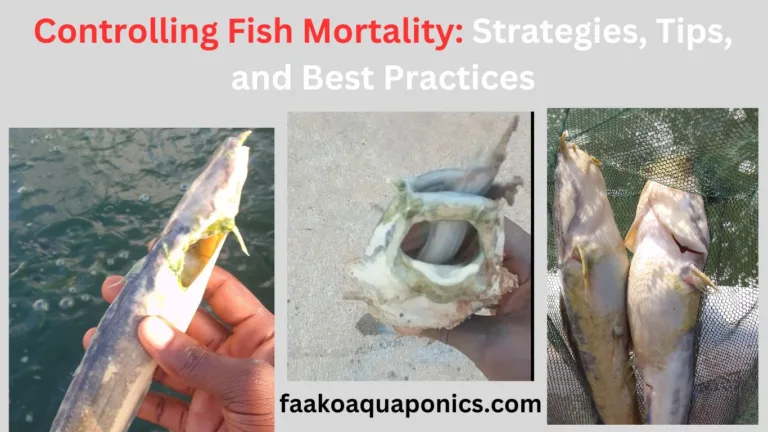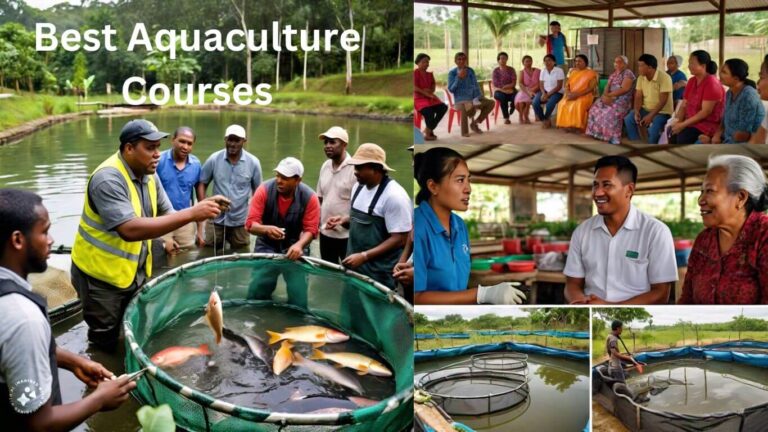How to control fish mortality is a common question asked by fish farmers worldwide. Whether you’re managing a small backyard pond or a large-scale aquaculture operation, minimizing fish mortality is crucial for maintaining healthy populations and maximizing productivity and profit (If rearing for commercial). In this comprehensive guide, we will delve into the various causes of fish mortality and explore effective strategies, tips, and best practices for controlling fish mortality.
Fish Mortality is frightening for beginners, not only frightening but is real and very high for beginners due to mistakes as a result of inexperience. This article will take you through those mistakes that cause fish mortality. And more importantly how to control fish mortality in your fish farm.
What is Fish Mortality?
Fish Mortality is simply the process of losing fish in a stock through death. In a fish farm, it could be a pond or whichever. There are several factors causing fish mortality as outlined below. So stay glued.
What Are The Types of Fish Mortality?
There are two types of fish mortality; Natural Mortality and Fishing Mortality
Natural Mortality
This is the process where fish is lost through natural causes such as cannibalism, predation, climate change, and diseases.
Fishing Mortality
This is the process where fish is lost through death by human activities in the fish farm. This could be illegal fishing activities such as harvesting. This can also be as a result of overcrowding, poor feeding, and several other factors caused by humans.
Fish Mortality Rate
The Fish Mortality rate is the rate at which fish die in a fish farm. For example, if 1,000 fish is stocked and before the harvesting period 100 die leaving 900, it means that 10% of the fish is dead and therefore the fish mortality rate is 10%.
To calculate the Fish Mortality Rate, which is in percentage; take the number of dead fish, divide it by the number of stocked fish, and multiply by 100.
For example above, 100/1000×100 =10%. You can take any amount and do the calculation. But keep in mind that you only get average figures since some fish may be lost unnoticed. But you can still based your statistics on the available data for you.
Fish Mortality can be high or low depending on how you manage your fish farm and that is why this article is written for you. So read to the end. But also note that fish mortality is normal in fish farms but the excess of it is worrying. As a beginner, a 50% or more survival rate is a high target. Don’t be discouraged, follow the recommendations in this post and you are covered.
What are the Causes of Fish Mortality?
Knowing the cause of a problem is said to be halfway to solving the problem. So knowing the causes of fish mortality is halfway to how to control fish mortality.
Fish Mortality can be attributed to several factors, ranging from environmental stressors to disease outbreaks. Environmental factors such as temperature fluctuations, dissolved oxygen levels, pH levels, and water quality play a significant role in fish health.
Disease and pathogens are another major cause of fish mortality. Bacterial, viral, fungal, and parasitic infections can spread rapidly within a population if not properly managed. Poor water quality, overcrowding, and stressors like handling and transportation can weaken fish immunity, making them more vulnerable to diseases.
Let’s dive into each of them in detail.
Water Quality Management
Maintaining optimal water quality is paramount for ensuring fish health and minimizing mortality rates. Regular monitoring of water parameters such as temperature, pH level, ammonia, nitrites, nitrates, and dissolved oxygen levels is essential.
For fish, water is life, therefore, the quality of the water, the better for the fish. Joke with your water quality and the likelihood of losing all the fish or getting fish mortality is high.
Disease
Regular health checks and observations allow for early detection of symptoms, enabling prompt treatment before diseases spread and therefore prevent fish mortality.
Preventing and managing diseases requires a proactive approach. Implementing quarantine procedures for new arrivals helps prevent the introduction of pathogens into existing populations.
High Stock Density
Overcrowding can lead to increased competition for resources such as feed and space. Stress and higher mortality rates among fish populations can also caused by high stocking. Determining the optimal stocking densities for specific species based on their size, behavior, and environmental requirements is crucial.
Avoiding overstocking and implementing strategies for size grading, sorting, and separating aggressive individuals help alleviate competition and reduce stress levels.
Poor Nutrition and Feeding Practices
Providing a balanced diet appropriate for the species’ nutritional requirements is essential for promoting fish health and growth. Overfeeding can lead to water quality issues and health problems, while underfeeding can result in malnutrition, cannibalism, and weakened immune systems therefore increasing fish mortality.
Both overfeeding and underfeeding can lead to fish mortality. Control these two and you will have your fish mortality reduced to the barest minimum
Handling and Transport Protocols
Minimizing stress during handling and transportation is critical for reducing fish mortality rates. Using appropriate equipment and techniques for fish capture and transfer helps minimize injuries and stress.
Improper handling of fish during transportation or sorting causes injuries and also affects the water quality of the pond and therefore increases fish mortality.
Predation
Predation is when fish-eating birds or any living organism, which could also be a fish, consume other fish. Those animals or living organisms are referred to as predators.
Predators can pose a significant threat to fish populations, especially in outdoor ponds or natural water bodies.
These predators do not only pick and consume the fish, but they may also leave bacteria in the pond therefore infecting the water to cause disease in the fish. This, in the long run, will be a financial loss to the farmer
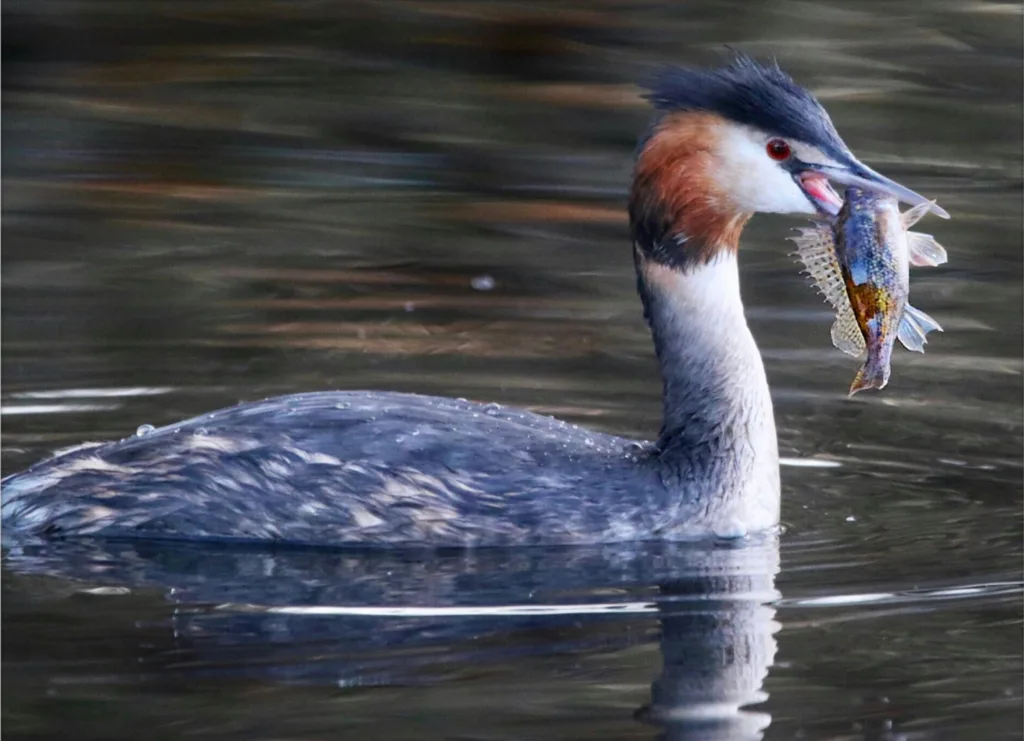
predator bird picked some fish
Emergency
Emergency is when an unforeseen problem occurs which is a potential threat to the fish farm. This could be a failure of the oxygenated pump, an electricity problem, or a change in the quality of water which requires a change of water. And many others.
Pollutants and Contaminants
Exposure to chemical pollutants, heavy metals, pesticides, or industrial waste can result in toxicity, organ damage, or systemic effects leading to mortality. Some even use chemicals to harvest fish and this can contaminate the water.
Even the use of unsterilized equipment in the farm such as nets and containers. This unsterised equipment can contaminate the water in the pond.
Climate Change
Alterations in temperature, precipitation patterns, ocean currents, and acidity levels can disrupt fish habitats, food availability, and reproductive cycles, leading to increased fish mortality rates
The sudden change in the climate affects the water quality. Too hot or too cold a climate both harm the fish farm therefore increasing fish mortality.
Cannibalism
Cannibalism is the process where a fish (predator fish) attacks and consumes another fish in a fish pond. This is caused by several factors including poor or inadequate feeding, competition for resources due to overcrowding of fish, and other factors. This cannibalism has a huge effect on fish mortality.
Please read the full article on cannibalism including how to control cannibalism.
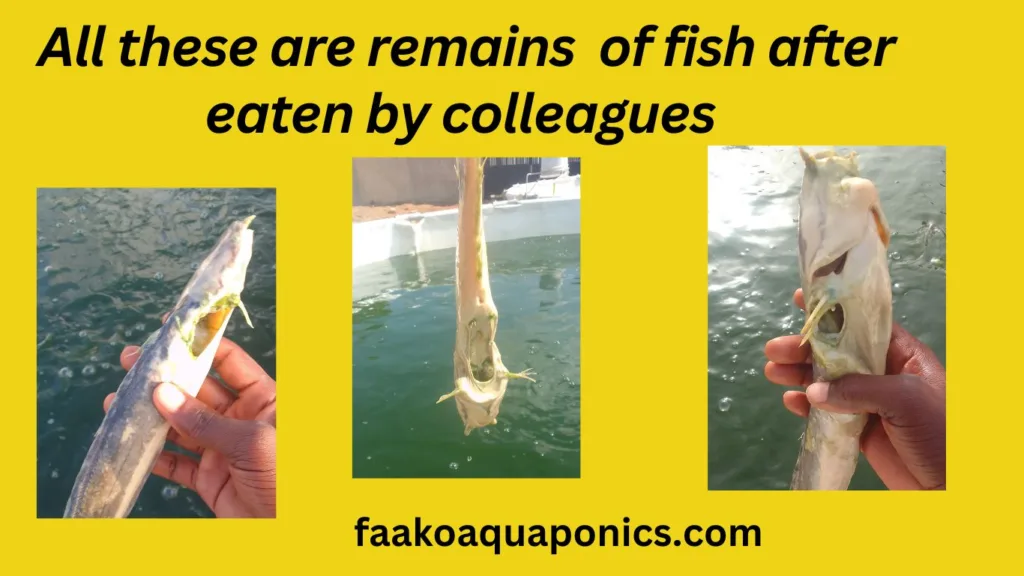
Algal Blooms
Rapid growth of algae, particularly toxic species, can lead to oxygen depletion or the release of harmful toxins, causing mass fish mortality in affected waters. Because it jeopardized the quality of the water.
How to Identify Dead Fish in Fish Farm
Those who are fish farmers already know how to identify dead fish in the fish farm but this is still a question for beginners who are yet to start this journey.
Often when a fish dies, it floats on the water. But sometimes when is cannibalized by other fish or predators, you may not see it at all. Sometimes you drain the water only to find skeletons or bones of fish under the pond which indicates that those were eaten leaving the bones.
After a fish is dead and floating, the best way to do this is to remove it. Some may leave it for other fish to feed on the dead one but that is an option but unfortunate thing is that it might be killed by disease and that disease is capable of spreading in the pond if not removed.
After removing dead fish from the pond, observe it to see whether there is a trace of the cause of death. If it’s cannibalized, you will see the eaten portion.
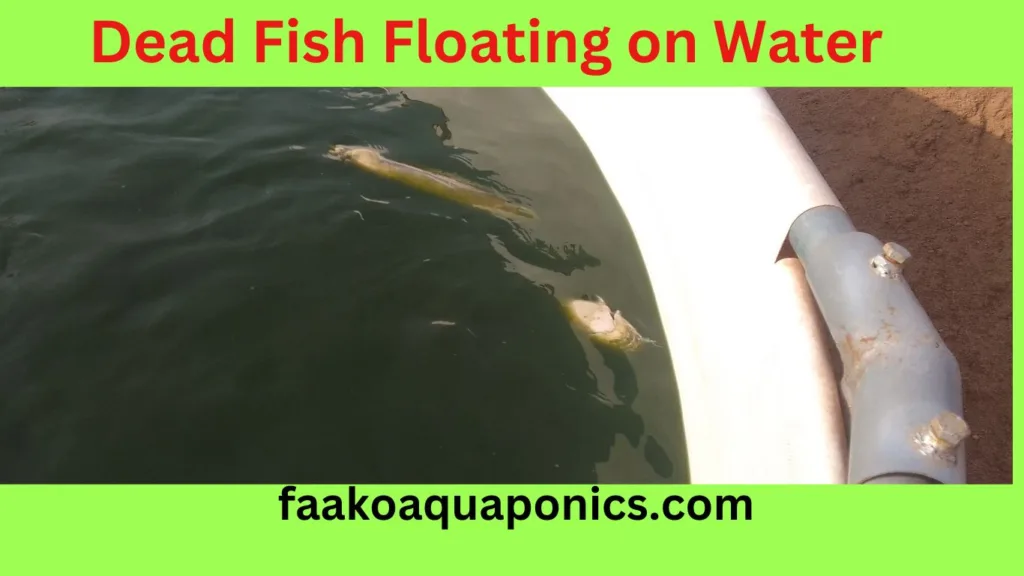
Prevention of Fish Mortality
No matter the circumstance, there will always be a way out. Despite the cause of fish mortality, learning how to control fish mortality can help you overcome the challenge and make more profit from your fish farm
1. Maintain High water Quality
Investing in reliable filtration systems and conducting regular water changes help remove excess waste and maintain a healthy aquatic environment.
Implementing biosecurity measures is crucial for preventing disease introduction and spread. Quarantine procedures for new fish arrivals, proper sanitation practices for equipment and facilities, and avoiding overfeeding to minimize waste buildup are all important components of water quality management.
2. Disease Management and Strategies
Vaccination programs, where applicable, can provide additional protection against common pathogens. Proper sanitation practices for equipment and facilities help reduce the risk of disease transmission. It’s also essential to monitor water quality closely, as poor water conditions can stress fish and make them more susceptible to diseases and will therefore increase mortality
3. Control Stock Density
Regular monitoring of growth rates and adjusting stocking densities accordingly is essential for maintaining healthy populations.
Avoid overcrowding by maintaining appropriate stocking densities based on the size of the tank or pond and the species being raised. Providing adequate space reduces stress and minimizes competition for resources
4. Provide balanced Nutrition and Practice Good Feed schedules
Monitoring feeding behavior and adjusting feeding schedules as needed ensure that fish receive adequate nutrition without overloading the system.
High-quality feed with proper nutritional content helps support optimal growth and immune function.
Supplemental feeding may be necessary during periods of low natural food availability to ensure fish receive sufficient nutrients. Good feeding practice also reduces cannibalism in fish farms
To learn more about Cannibalism, check here
5. Handle Fish Properly
Proper handle fish during sorting and transportation to avoid overstress and injuries and this also reduces fish mortality.
Acclimating fish to new environments gradually helps reduce stress and improve survival rates. Providing adequate rest periods after transport allows fish to recover from the stress of transportation before being introduced into their new habitat.
6. Predation Control Measures
Implementing physical barriers or protectors such as nets or fences can help prevent access by predators. Introducing natural predators of nuisance species can help control predator populations and reduce predation pressure.
Monitoring predator populations and behavior allows for early detection of potential threats. Adjusting stocking densities or habitat structures to reduce predation risk and using non-toxic predator deterrents or repellents can help mitigate predation effects.
But also be careful in putting the net and other fences to prevent predators since it can also trap and kill fish like in the picture below
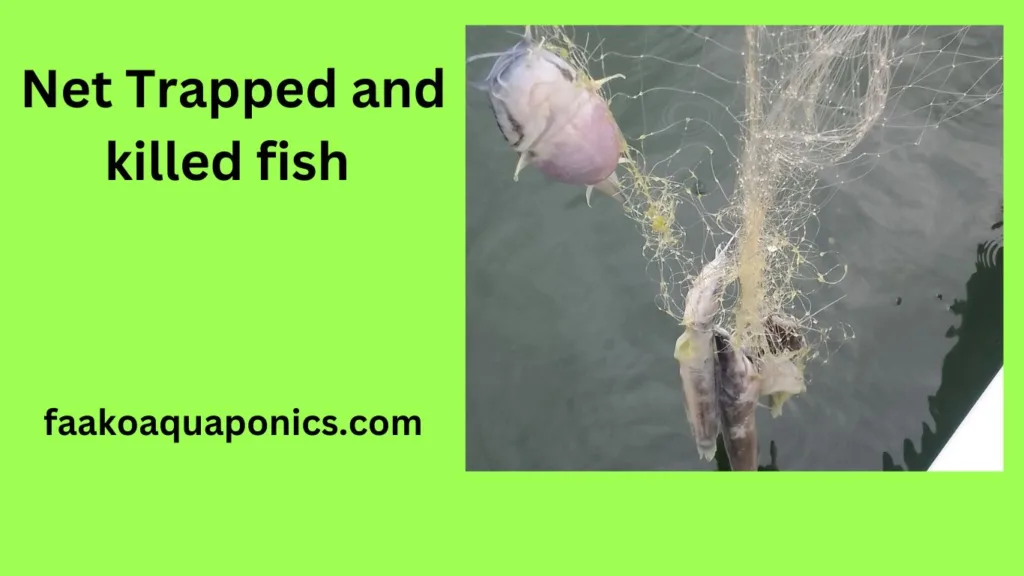
7. Emergency Response Planning
Developing comprehensive emergency response plans is essential for effectively managing unforeseen events such as sudden environmental changes or disease outbreaks.
Don’t wait till there is a problem before you start running helter-skelter. Maintaining emergency supplies and equipment, such as backup generators, oxygenation systems, and medications, ensures readiness to respond to emergencies promptly.
Establishing communication protocols with relevant authorities or experts facilitates coordinated responses to emergencies. Regular training of staff in emergency response procedures helps ensure that everyone knows their roles and responsibilities in times of crisis. Regularly reviewing and updating emergency plans based on lessons learned from past incidents improves preparedness and resilience.
8. Monitor and Respond to Algal Blooms
Implement early warning systems for detecting algal blooms and take prompt action to mitigate their impacts. Measures such as aeration, nutrient management, and algaecide application can help prevent mass fish mortality associated with harmful algal blooms
9. Promote Sustainable Fishing Practices
Avoid illegal fishing practices and promote sustainable fishing methods such as selective harvesting, gear restrictions, and seasonal closures. Sustainable management ensures the long-term viability of fish stocks and reduces overall fish mortality
10. Mitigate Climate Change Effects
Support initiatives to reduce greenhouse gas emissions and minimize the impacts of climate change on the fish farm. Adaptation strategies such as habitat restoration, species translocation, and ecosystem-based management can help fish populations cope with changing environmental conditions
Another way to control climate change and its impact is to have your fish pond in a Greenhouse. In the greenhouse, you can always control the weather and therefore mitigate climate change.
Conclusion
Controlling fish mortality requires a proactive and multifaceted approach that addresses various factors affecting fish health and well-being. By understanding the causes of mortality and implementing effective management strategies, aquaculturists, and fish enthusiasts can minimize losses and promote sustainable fish populations.
Prioritizing the health and well-being of fish through careful management practices is essential for achieving long-term success and sustainability in aquaculture and fishkeeping endeavors. With a combination of knowledge, diligence, and proactive measures, it’s possible to significantly reduce fish mortality and create thriving aquatic environments.
To avoid fish mortality on your farm, consider enrolling in Best Aquaculture Course after learning how to control fish mortality.


